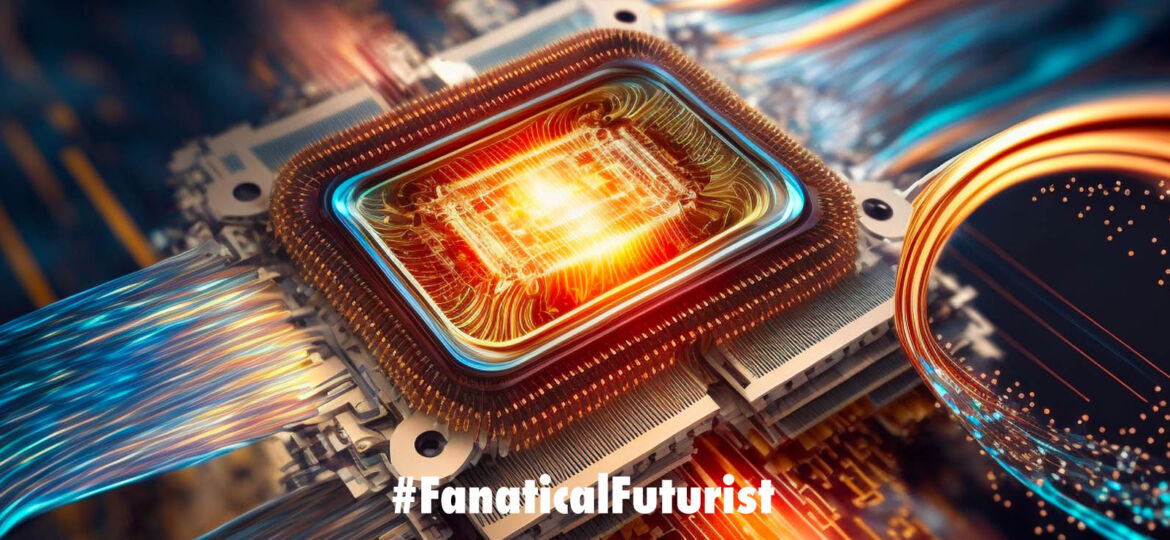
WHY THIS MATTERS IN BRIEF
We all like speed, right? Well this new computer chip makes warp drive look slow …
 Love the Exponential Future? Join our XPotential Community, future proof yourself with courses from XPotential University, read about exponential tech and trends, connect, watch a keynote, or browse my blog.
Love the Exponential Future? Join our XPotential Community, future proof yourself with courses from XPotential University, read about exponential tech and trends, connect, watch a keynote, or browse my blog.
If you think that the chip in your latest Mac is fast then it’s got nothing on a new computer chip that just transmitted a record 1.84 petabits of data per second via a fibre-optic cable – enough bandwidth to download 230 million photographs in that time, and more traffic than travels through the entire internet’s backbone network per second.
Asbjørn Arvad Jørgensen at the Technical University of Denmark in Copenhagen and his colleagues have used a photonic chip – a technology that allows optical components to be built onto computer chips – to divide a stream of data into thousands of separate channels and transmit them all at once over 7.9 kilometres.
First, the team split the data stream into 37 sections, each of which was sent down a separate core of the fibre-optic cable. Next, each of these channels was split into 223 data chunks that existed in individual slices of the electromagnetic spectrum. This “frequency comb” of equidistant spikes of light across the spectrum allowed data to be transmitted in different colours at the same time without interfering with each other, massively increasing the capacity of each core.
Although data transfer rates of up to 10.66 petabits per second have been achieved before using bulky equipment, this research sets a record for transmission using a single computer chip as a light source. The technology could enable the creation of simple, single chips that can send vastly more data than existing models, slashing energy costs and increasing bandwidth.
The amount of data sent in the experiment was so vast that no computer exists that could supply or receive this much information so quickly. In experiments, the team instead passed “dummy data” through all channels, says Jørgensen, and tested the output one channel at a time to verify that it was all being sent and could be recovered intact.
“You could say the average internet traffic in the world is about a petabit per second. What we transmit is two times that,” says Jørgensen. “It’s an incredibly large amount of data that we’re sending through, essentially, in less than a square millimetre of cable. It just goes to show that we can go so much further than we are today with internet connections.”
The chip needs a single laser, shining continuously, which is split into many frequencies, as well as separate devices to encode data into each of the output streams. But Jørgensen says these could be integrated onto the chip itself, making the entire apparatus the size of a matchbox.
Current devices to send data using just one laser in a single slice of spectrum have been miniaturised to around that size, and Jørgensen says that if the team’s device were built to the size of a small server, it could transmit as much data as 8,251 matchbox-sized devices currently do – one for each channel the team managed to send through a single cable.
Journal reference: Nature, DOI: 10.1038/s41566-022-01082-z

















[…] ago I talked about a computer chip that can transfer all the world’s internet traffic in less than a second through its circuits, and a new petabit network record that saw researchers smash 1.7 Petabits […]
[…] there was the first organism with 50% Synthetic DNA, new Petabit photonic chips, the very first predictive vaccines developed by AI, Quantum energy teleportation, a robot CEO was […]